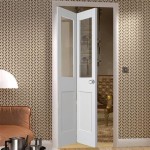Wood panelling for walls interior is a great way to add a touch of warmth and elegance to any room in your home. From classic to contemporary, wood paneling can be used to create a unique and timeless look. This comprehensive guide will help you learn all about interior wood panelling, from its history and types, to how to install it and care for it over time.
History of Wood Panelling
Wood panelling has been used for centuries to decorate walls. In the 16th century, wood panelling was used in wealthy homes to create a more grandiose look. In the 19th century, wood panelling was popular in churches and public buildings due to its durability and aesthetic appeal. In the modern era, wood panelling is used in homes to create a timeless, classic look.
Types of Wood Panelling
There are several types of wood panelling available for walls interior, including:
- Solid Wood Panels: Solid wood panels are made out of a single piece of wood and are available in a variety of finishes and colors. These panels can be stained or painted to create a unique look.
- Veneer Panels: Veneer panels are made out of thin sheets of wood that are bonded to a substrate. These panels are available in a variety of finishes and colors and are often less expensive than solid wood panels.
- MDF Panels: MDF panels are made out of medium-density fiberboard and are available in a variety of finishes and colors. They are often less expensive than solid wood or veneer panels.
- Recycled Wood Panels: Recycled wood panels are made out of reclaimed wood and are available in a variety of finishes and colors. These panels are often more expensive than other types of wood paneling.
Installation of Wood Panelling
When installing wood panelling for walls interior, it is important to choose the right type of panel for your project. Depending on the type of panel you choose, the installation process may be different. Here is a brief overview of the steps involved in installing solid wood, veneer, MDF, and recycled wood panels:
- Solid Wood Panels: To install solid wood panels, you must first prepare the wall by sanding and priming. Next, you will need to measure and cut the panels to fit the space. Then, you will need to use glue and nails to attach the panels to the wall. Finally, you will need to finish the panels with a sealant.
- Veneer Panels: To install veneer panels, you must first prepare the wall by sanding and priming. Next, you will need to measure and cut the panels to fit the space. Then, you will need to use a wood adhesive to attach the panels to the wall. Finally, you will need to finish the panels with a sealant.
- MDF Panels: To install MDF panels, you must first prepare the wall by sanding and priming. Next, you will need to measure and cut the panels to fit the space. Then, you will need to use a wood adhesive to attach the panels to the wall. Finally, you will need to finish the panels with a sealant.
- Recycled Wood Panels: To install recycled wood panels, you must first prepare the wall by sanding and priming. Next, you will need to measure and cut the panels to fit the space. Then, you will need to use screws to attach the panels to the wall. Finally, you will need to finish the panels with a sealant.
Caring for Wood Panelling
Wood panelling is a great way to add a touch of warmth and elegance to any room in your home. However, it is important to care for your wood panels over time to ensure they remain in good condition. Here are some tips for caring for wood panelling:
- Regularly dust the wood panels to remove any dirt or dust that may have accumulated.
- Avoid placing anything hot on the wood panels, as this can cause discoloration.
- To prevent scratches or dents, use furniture felt or other protective pads on the bottom of furniture that comes in contact with the wood panels.
- If the wood panels become wet, dry them immediately with a soft cloth.
- If the wood panels become damaged, repair them as soon as possible to prevent further damage.
Conclusion
Wood panelling for walls interior is a great way to add a touch of warmth and elegance to any room in your home. From its history to its types and installation process, this comprehensive guide has provided you with all the information you need to know about interior wood panelling. Additionally, we have also discussed how to care for your wood panels over time to ensure they remain in good condition. With this information, you can now create a unique and timeless look with wood panelling for your walls interior.










/Wood-Wall-Paneling-Mid-Century-Modern-Style-184315944-56a4a00e5f9b58b7d0d7e307.jpg)




Related Posts








